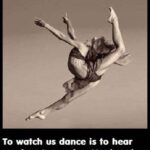My initial impression upon arriving at Taos Pueblo in New Mexico was muted by the unglamorous sight of a muddy, snow-patched car park in January. Concerns about a potentially artificial tourist experience weren’t eased by the admission kiosk. Photography was strictly prohibited, especially on a ceremonial dance day, as firmly communicated by the tribal police.
However, stepping into Taos Pueblo itself was transformative. The entrance opened to a wide, grassy plaza flanked by tiered red adobe buildings, some reaching three stories high. A small, partially frozen stream meandered through the center, crossed by quaint wooden bridges. Snow dusted the ground, the mountain air was crisp under a clear blue sky, and wisps of smoke curled from chimneys. Packs of dogs chased each other amidst the remnants of Christmas bonfires. Modernity was utterly absent: no paved roads, no brick, no power lines, no commercial signs—nothing. Unlike even the most remote African villages where a brand logo might appear, Taos Pueblo felt like a journey back to the Middle Ages. Aside from a few tourists in modern attire, seemingly grappling with their inability to immediately share their experience on social media, the scene was timeless. Taos Pueblo, the ancestral home of a Tewa-speaking Native American tribe, is the oldest continuously inhabited settlement in the United States, constructed between 1000 and 1450. One of the few visible influences of outside cultures is the introduction of the charming turquoise doors by the Spanish.
RELATED: The Scenic High Road to Taos: A New Mexico Journey
My visit serendipitously coincided with Three Kings Day, a significant feast day at the pueblo, celebrated with the captivating Deer Dance. Despite it being well past the advertised midday start, a diverse crowd of tourists and locals gathered along the creek banks, buzzing with anticipation. Women occasionally peeked from the vibrant blue doorways or traversed rooftops connecting upper-level homes, adorned in colorful shawls and moccasins, clearly dressed for the occasion. The tension of waiting stretched for another hour. Then, a subtle, rhythmic drumbeat emerged from behind the southern buildings, gradually intensifying. A tightly knit group appeared in the distance, moving in unison to the drum’s pulse. Each man bore the head of a bison or elk upon his shoulders, creating a herd-like impression. Against the ancient backdrop and smoky air, the sight was profoundly moving. The drumming grew louder, accompanied by a monotonous, melodic chant. Soon, another drumbeat arose from the opposite side of the pueblo, followed by a similar antler-clad procession. The two groups converged in the middle, meeting at the creek. Closer inspection revealed participants of all ages, including a young boy, perhaps four or five, almost hidden beneath the massive bison head he carried. Bringing up the rear were elders, distinguished not by animal headdresses but by red earth paint on their bodies and feathers in their hair. Each elder carried a drum and chanted deeply, their expressions intensely serious. As they passed beneath the tiered adobe structures, women watching from above emitted piercing, high-pitched calls, creating a striking and unforgettable soundscape.
It became clear that this event was not staged for tourist consumption but was a genuine expression of cultural heritage. Visitors remained respectfully in the background, yielding space to the local community members within the crowd, many of whom seemed connected to the pueblo but not necessarily residents. The deer dance performance, with its singing and rhythmic movements, continued well into the afternoon in the main plaza in front of the San Geronimo Church. The precise meaning and significance of the deer dance remains enigmatic to outsiders, and intentionally so, as Taos Pueblo cherishes and protects its traditions.
The deer dance at Taos Pueblo offers a rare glimpse into a living, ancient tradition. It is a powerful reminder of the enduring strength of indigenous cultures and the importance of preserving such unique ceremonies. Witnessing the deer dance is not merely observing a performance; it is experiencing a profound cultural expression that resonates with centuries of history and tradition.
Explore More of Our Cultural Journeys:
Amangani To Close For Renovations Through 2026Elevated Luxury | Treehouse Stays Across the U.S.Community Connections | Non-Profits Making a DifferenceSecrets to Planning the Perfect Road TripSeven Places to Book Ahead for 2025

